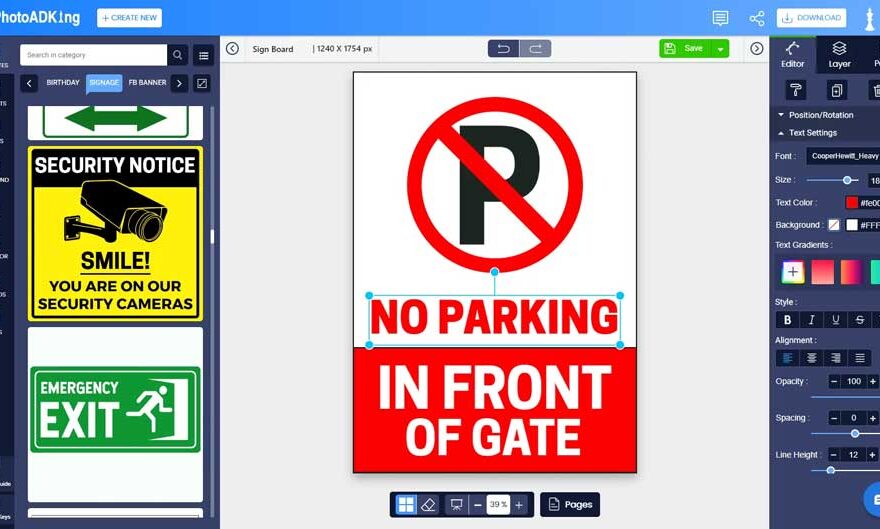The Art of Measurement: Translating Creative Performance into Business Growth

Source: Freepik
Today, creativity is no longer only an artistic pursuit. In the world of branding, creativity is an investment. But what is the impact of creative production? While the importance of data-driven creativity has never been clearer, brands must still connect the dots between creative campaigns and outcome-driven results. A brand strategy firm must embrace measurement as a discipline to identify how investments are paid off, optimize future messaging, and determine long-term growth strategies. Measurement, when paired with creativity, becomes a method of engagement, innovation, and measurably growing impact.
Creative performance intersects with everything surrounding brands: customer awareness, attitudes, perceptions, and brand loyalty, but understanding their impact on ROI can be difficult to determine without structured evaluations. It shouldn’t take rocket science to identify whether a campaign “looked good” or was “working,” but organizations look for qualitative and quantitative metrics that fit business goals and provide a clearer picture of what is working (or not) and iteration. Measurement, when respectfully used, becomes the quiet counterpart to innovation.
Five Methods to Turn Creative Results into Tangible Business Value

Source: Freepik
- Ground Measurement in Research and Data
Creative evaluations cannot take place without the solid context of valid insights. A market research firm plays an essential role in supplying the baseline data required to evaluate changes. Pre-launch surveys, focus groups, and audience assessments provide brands with the background to be able to determine prevailing sentiment and behavioral patterns. With this level of detail, teams are better able to execute their creative campaigns with original ideas that are also consistent with consumer expectations.
As well, post-campaign research is an important means of identifying how audience opinions or behaviors may have shifted after exposure to creative assets. Increases in brand awareness? A lift in purchase intent? Relating creative outputs to genuine audience responses is essential among many teams to know their hard work is not taking place in a vacuum but is reflective of the reality of the market.
- Align Creative KPIs with Business Goals
Creativity should never be in a silo from the broader goals of the company. It does not matter whether the aim is to grow sales, promote user engagement, or improve brand trust; every creative exercise should include measurable key performance indicators (KPIs). These could include click-through rates, conversion rates, time-on-page, customer acquisition cost, or share of voice.
When teams develop KPIs ahead of the launch of a campaign, they can monitor performance in real time and effectively make changes based on results. For example, if a video ad creates a vast amount of impressions but fails to generate some leads, creative direction or targeting could be the flaw. Keeping creativity tied to the business metrics helps us strengthen the strategic impact and manage accountability.
- Use Attribution Models to Identify Influence
Creative types frequently operate across a multitude of touchpoints—social, email, web, TV—and the impact can be subtle or multiphased. Attribution modeling can support businesses by allowing them to shed light on how the multitude of assets they produce contribute to customer journeys. The establishment of first-touch, last-touch, and multi-touch models enables the segmentation of performance across the process.
This enables brands to ascertain what worked, as well as where it worked. For example, did a display ad create awareness that then led to a search query? Did a story-based social post drive the emotional connection to step forward to purchase? Attribution capabilities bring clarity to creative impact across platforms, allowing for more targeted investment decisions.
- Monitor Engagement Beyond Vanity Metrics
While likes, shares, and impressions can show visibility, they seldom show the full picture. More meaningful engagement metrics, such as comments that infer sentiment, video completion rates, or duration of visit to interactive experiences, give a clearer representation of audience engagement and message effectiveness.
Tools that we can access to measure emotional engagement and depth of interaction can be quite sophisticated, such as heatmaps or social listening. Understanding how audiences interact with various aspects of creativity helps to optimize visual direction, copy tone, and theme-based content, offering all possibilities based on user activity.
- Incorporate Feedback Loops for Continuous Improvement
Measurement should be a part of the creative process. By creating feedback loops using feedback from customers, employees, or A/B testing campaigns, you can ensure that creativity is rooted in real-world results. Feedback mechanisms provide more agility and effectiveness.
As an example, if you establish images for a campaign that don’t resonate with a key demographic, the built-in feedback will allow for quick correction. Testing variations for different messages before rolling them out can lead to a higher success rate. Creativity can be a scalable and growth-oriented endeavor once you have the methodology of design informing data, and data feeding back into design.
End Point
Assessing creative output is both a science and an art. With clear goal-setting, real-time analytics, and continuous experimentation, organizations can harness the full potential of creativity as an engine for growth, taking risks and turning big ideas into tangible and sustainable results.


